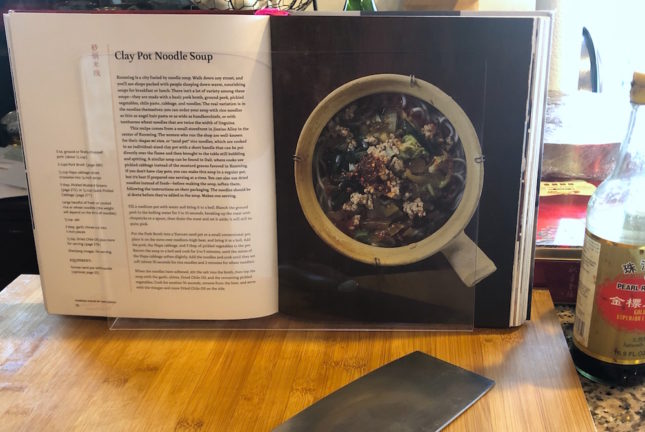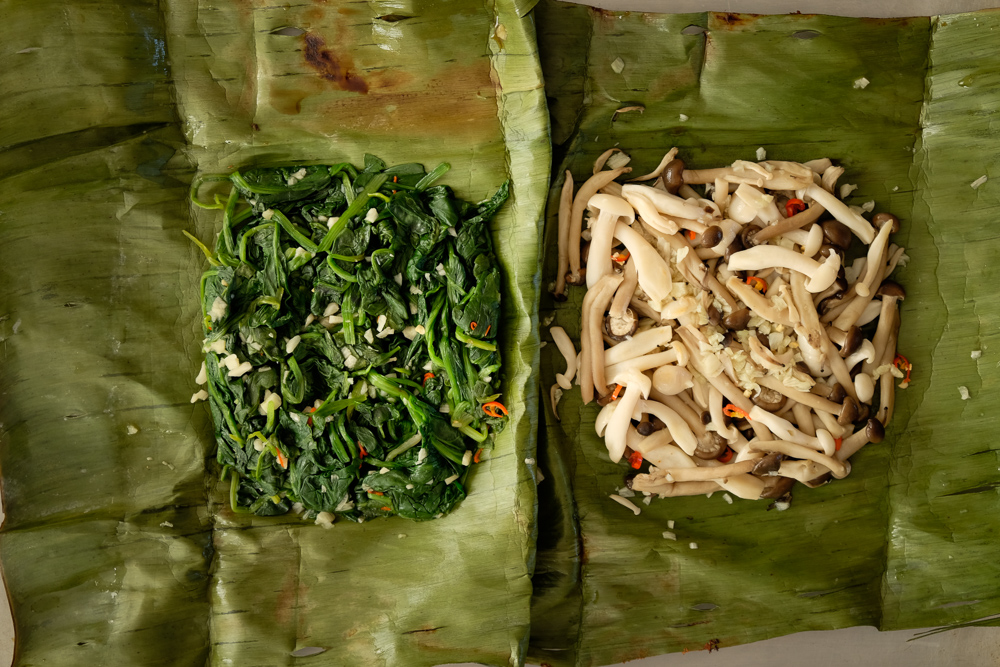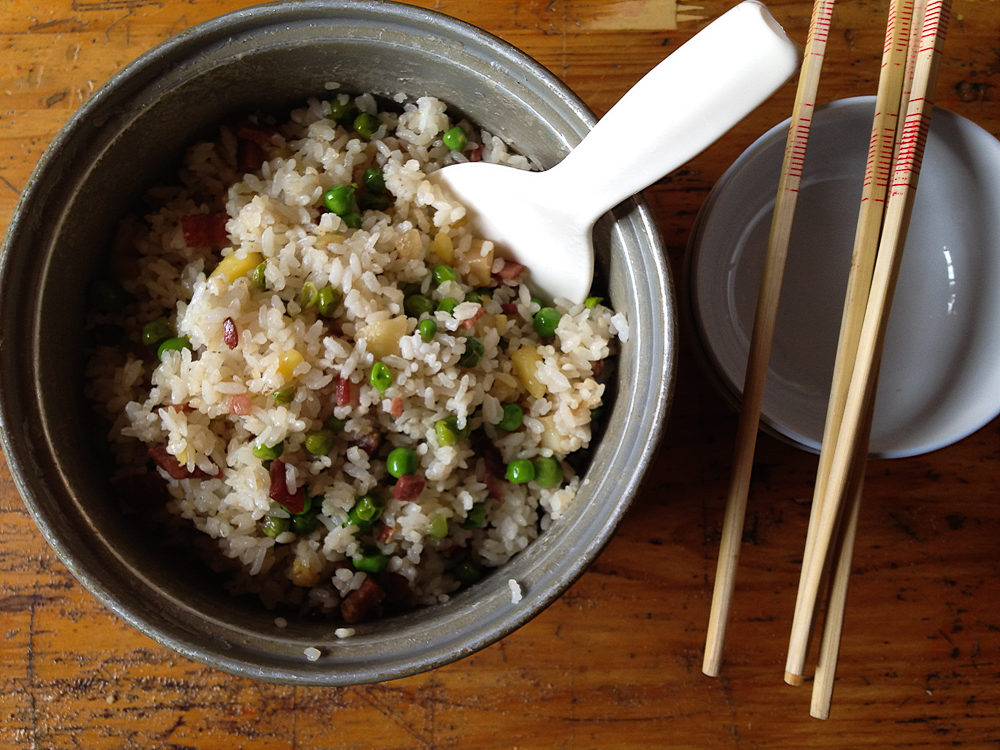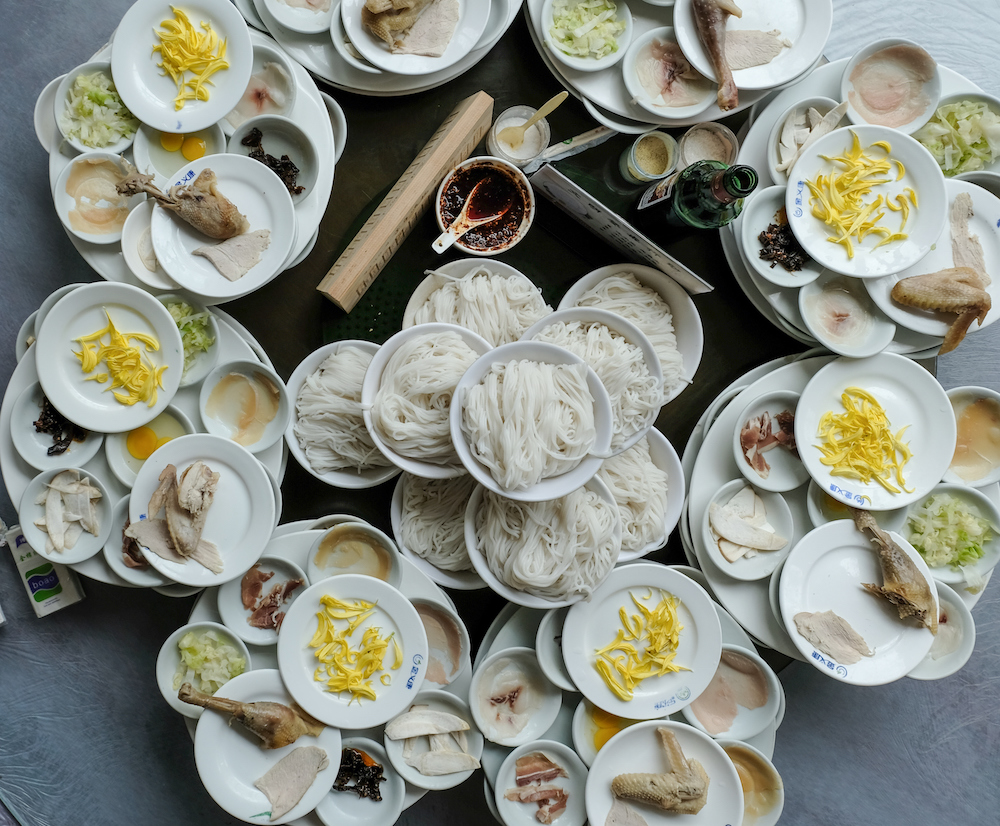Where to Start: Cooking South of the Clouds’ Most Interesting and Accessible Recipes
October 1st, 2018

It’s official: Our book is out in the world! The book was released on Sept. 25th, and sold out on Amazon the following day. We’re bowled over by the response we’ve had to this book, especially from people who love Yunnan food and have been waiting for recipes that will let them make it in their own homes.
We’ve also received the same question over and over again, from readers, cooks, and even reporters: “Which recipes should I try first?” The answer, of course depends on what you’re looking for, so here are a few of our favorite recipes for every kind of cook.

Vegetables Grilled in Banana Leaves
Exploring Yunnan Food for the First Time—And Looking for Something Easy
If you’re just starting to explore the foods of Yunnan Province, or you aren’t very comfortable with making Chinese foods yet, there are a few super simple recipes that are a great place to start.
Clay Pot Noodle Soup
This simple noodle dish is a standard breakfast and lunch in Kunming—something we ate many times a week when we lived there. You can make your own broth and source fresh rice noodles or just use any broth you already have and any kind of long wheat or rice noodles. And while the dish is traditionally made in a clay pot, many cooks make it in a small pot and serve it in a large bowl. (Find it on p.70; see photo at top of post)
Grandma’s Potatoes
Yunnan’s answer to mashed potatoes, this dish is a classic local comfort food. You can make it with or without Yunnan-style pickles (there’s a recipe in the book, as well as options for buying similar pickles from a Chinese market); either way, it’s absolutely delicious. (Find it on p.40)
Stir-Fried Sausage with Sichuan Peppercorns
This simple stir-fry of chorizo and bell pepper flavored with ground Sichuan peppercorns mimics a Tibetan sausage found in Yunnan and other parts of historical Tibet. (Find it on p.119)
Dai Grilled Chicken with Herbs
If it’s still warm enough for grilling, try this simple southern Yunnan-style chicken, which is stuffed with fresh herbs and chiles and grilled over hot coals. (Find it on p.134)
Dai Lime Chicken
Also known as “Ghost Chicken,” this classic dish from western Yunnan is nothing more than boiled chicken tossed with herbs and chiles and dressed with lime juice. (Find it on p.222)
Vegetables Grilled in Banana Leaves
Green vegetables or mushrooms mixed with garlic and chiles are amazingly flavorful when they’re cooked in banana leaves. They are traditionally cooked on a grill, but you can also make them on the stove top. (Find them on p.247)

Fried Rice with Ham, Potatoes, and Peas
Don’t Have Access to Many Asian Ingredients
If you want to cook from the book, but you don’t have an Asian market nearby, first things first: you should order some ingredients online (I’ve pulled together links for all of the ingredients needed here). But while you’re waiting for those to come, here are some delicious recipes that don’t require lots of hard-to-find ingredients.
Fried Rice with Ham, Potatoes, and Peas
Yunnan is famous for its hams, and, while you can’t get Yunnan hams in the U.S., you can use Jamón Iberico to make this dish. All it takes is a thick piece of ham, some potatoes, some peas, and some rice, and you’ve got a classic Yunnan-style dish. (Find it on p.37)
Potato Pancake with Chile Powder
This plate-sized potato pancake is popular in central and northern Yunnan. The flavorings include ground dried chile (mild or slightly spicy, depending on your preference), paprika, sesame seeds, and chives. (Find it on p.99)
Stir-Fried Beef with Mint
Ground (or minced) beef, mint leaves, cilantro, and fresh chiles are flavored with some soy sauce and ginger in this simple recipe. If you don’t have Chinese soy sauce, use just 1/2 of what’s called for in the recipe, then taste the meat and add more as needed. (Find it on p.161)
Fried Kidney Beans with Fennel
For this recipe you’ll need to find whole dried chiles and fennel that has some nice fronds on it—both things that should be available in many markets. The combination is incredibly addictive. (Find it on p.194)

Yinjiang-Style Breakfast Noodles with Sweet-Spicy Pork Sauce
Want Something that Tastes Really Unique, and Don’t Mind Cooking For a Couple Hours On a Weekend
If you’re an adventurous cook, and you want to dive right into some seriously delicious and unique recipes to see how Yunnan’s foods differ from those of the rest of China (and the rest of the world), you might want to start with some of my favorite ways to show of the province’s unique and varied flavors.
Breakfast Noodles with Pork and Sweet-Spicy Sauce -or- Cold Rice Bowl with Stewed Beef and Herbs
These two dishes are made with variations of zajiang or “mixed sauce,” a combination of meat, chile-bean sauce, and other flavorings that is addictively delicious. The noodle soup version (on p.248) is from western Yunnan, and the rice version (on p.205) is from eastern Yunnan. They each require various toppings that you have to prepare ahead, but they’re absolutely worth the extra effort.
Dried Beef Salad
Gan ba, dried beef, is a classic Yunnan ingredient and is eaten in a variety of salads, like the Dai Dried Beef Salad with Fennel and Chiles (on p.225) and the Jingpo Dried Beef with Galangal and Tomato (on p.233). The beef itself has to be dried in a very low oven all day (see the recipe on p.266), so it’s a good one to prep when you’re going to be home all day and want to warm up your place during the day.
Anything with Pickled Bamboo Shoots
Sour, astringent, flavorful pickled bamboo shoots are a popular ingredient in western Yunnan, and you can replicate the flavor easily with Thai sour bamboo shoots for recipes like the stir-fried Beef with Pickled Bamboo (on p.253), Sour Stewed Vegetables (on p.257), and Stewed Beef with Bamboo Shoots and Fresh Mint (on p.160).
Crossing the Bridge Rice Noodles
This is, obviously, Yunnan’s most famous dish. You can make a version that’s better than anything we’ve found in restaurants in the US, but it does take a little time. Feel free to add whatever ingredients you have readily available ot the soup! (See recipe on p.157)

Crossing the Bridge Rice Noodles
Photos: Josh Wand



